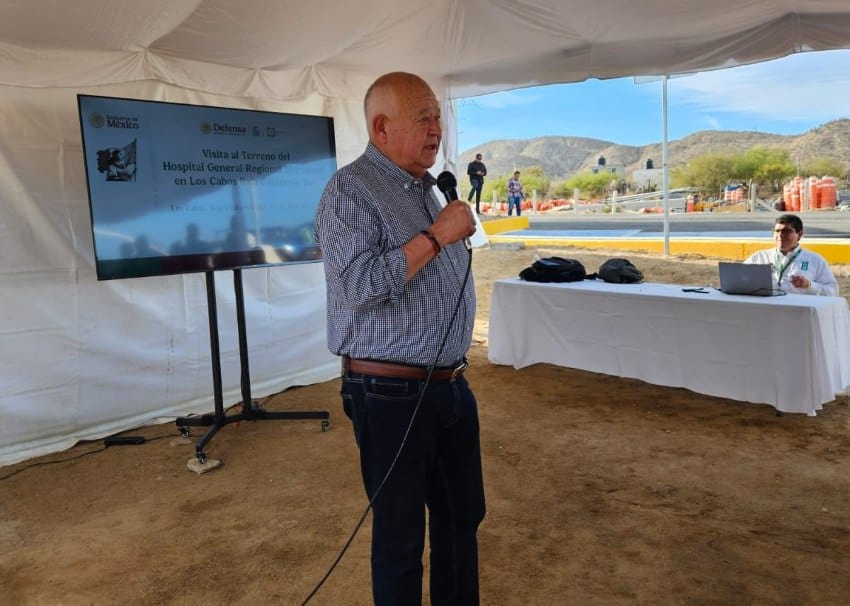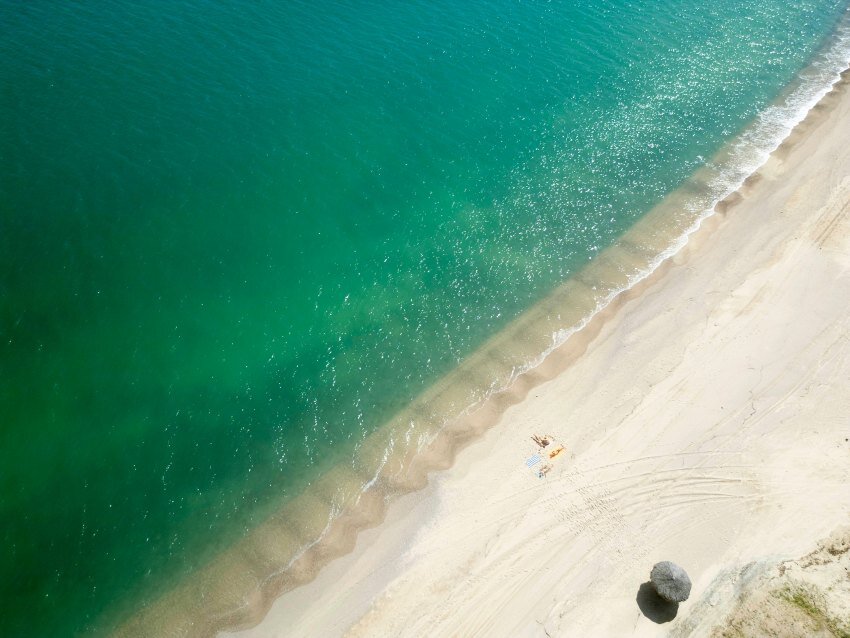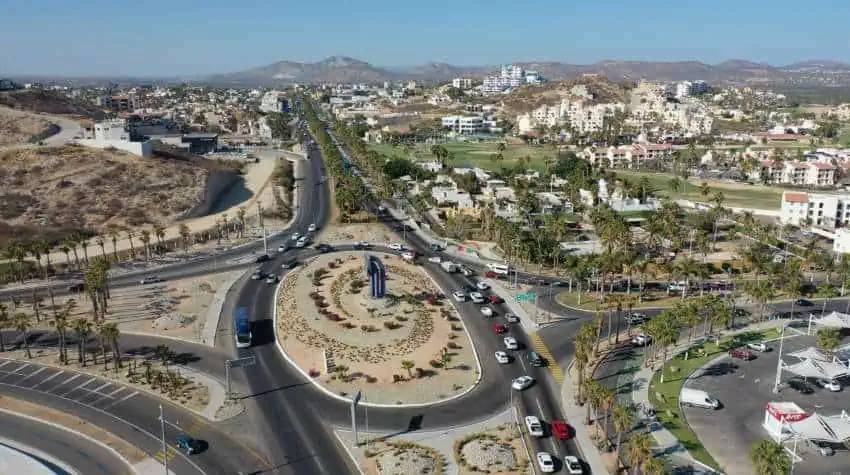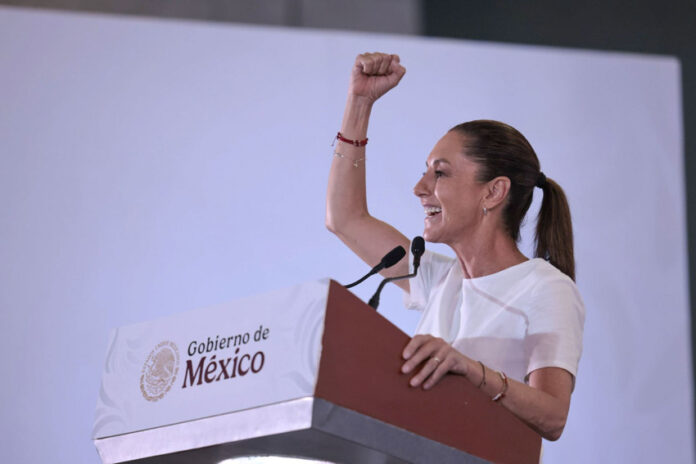President Claudia Sheinbaum’s trip last month to Los Cabos and La Paz on May 17 and 18 was big news. That was due not only to what the president did, but to what she said, and also what those accompanying her — including Baja California Sur governor Victor Manuel Castro Cosío and the mayors of Los Cabos and La Paz — had to say.
New hospital project announced for Los Cabos

The purpose of Sheinbaum’s visit to Los Cabos was to celebrate the start of construction of a new Social Security Institute (IMSS) hospital in San José del Cabo that is projected to benefit up to half a million residents.
The Los Cabos Regional Hospital will feature 260 beds — only 350 are currently available in the entire state — as well as state-of-the-art equipment such as CT and MRI scanners and doctors representing 46 medical specialties, from cardiology and gynecology to oncology and urology. Based on the timeline for its completion, the first patients should be welcomed in early 2027. Whenever it happens, it will be a major addition for the Mexican citizens who live in Los Cabos, and for eligible expats, of whom there are over 17,000 in total, 10,000 from the U.S.
In addition to expressing excitement over the hospital project, the president also addressed several other issues of importance for Los Cabos residents, including the ongoing work on the second desalination plant in Cabo San Lucas, which has dragged on far too long and is of major importance in the state with the least rainfall in the country and in a city with ongoing water issues.
President Sheinbaum pledged to help expedite the desalination work. She also divulged that she was headed to La Paz to formally announce the El Novillo dam project, which she said would eventually solve the state capital city’s drinking water problem. Construction on that project is set to begin in August.
Addressing inequality and beach access in Los Cabos

President Sheinbaum also touched on the increasing inequality that has developed in Los Cabos, with “hotel rooms costing hundreds of dollars, and the workers who work in these hotels barely have access to housing,” and said she was working to combat this issue.
Governor Castro agreed with the spirit of the president’s remarks, adding during his speech: “We will continue to defend the roads that belong to the people. We have no doubt, nor are we mistaken, that we must recover access to the beach as much as possible. So much has been taken from us. No more plundering of Baja California Sur! No more plundering of the historical and cultural heritage of our homeland!”
There’s a lot to unpack from this. The beach reference was obviously to the many luxury hotels that have sought to impede local access to the beach. Specifically, it probably refers to the East Cape Road dispute, in which a road section was closed during the construction of a Grupo Vidanta development, leaving many residents angry over how this closure affected their beach access.
Los Cabos officials, led by the president of the Los Cabos municipality, Christian Agúndez, rezoned the disputed road area as obsolete, legitimizing the construction. However, in response to citizen petitions, Governor Castro restored public access in February and initiated efforts to improve the traditional East Cape Road, used since 1958. Grupo Vidanta, meanwhile, has threatened lawsuits.
Notably, the mayor of Los Cabos, the state governor and Mexico’s president, who are on different sides of this issue, were all present at the hospital construction ceremony. Sheinbaum and Castro also took the opportunity to announce further programs to benefit regional residents: Sheinbaum announced that a housing development for residents through the National Housing Commission’s (Conavi) Vivienda para el Bienestar program is now 40 percent complete.
At the same time, Castro noted that two more campuses of the Universidad Autónoma de Baja California Sur will open in Los Cabos this year, with another slated to be built in Comondú.
Battling traffic detours during Fonatur roundabout construction

The Fonatur roundabout in San José del Cabo is the most high-traffic area in Los Cabos, seeing upwards of 60,000 cars daily. It’s not the only congested traffic spot by any stretch of the imagination, but it was the one that most needed upgrades. Thus, it was exciting to hear that 450 million pesos had been allotted through the Infrastructure, Communications and Transportation Ministry (SICT) to improve driving conditions in this bustling roundabout.
The plan was ambitious, with the most recent iteration a multilevel structure with 780 meters of four-lane underpass integrated to prevent traffic pileups now and as the population continues to grow in the coming decades. Pedestrian use is also a major design consideration, with a projected 18,000 square meters of sidewalks included as well as 24,000 square meters of recovered green spaces.
However, as soon as work on the project began in May, it became evident that not enough thought had gone into plans for how to route traffic during the up to 18 months expected for construction.
Almost immediately, when construction began, complaints began rolling in, with journeys that had previously taken a few minutes now stretching to hours, including for airport shuttles. By late May, an additional lane had been opened to traffic through construction areas, alleviating some congestion. Local authorities also announced a reversible center lane that can change directions according to traffic patterns and the direction most drivers are coming through during each part of the day. This dynamic traffic flow initiative should also mitigate the traffic resulting from the ongoing construction.
Eventually, the Fonatur roundabout should reduce traffic in Los Cabos. But during the next 18 months or so, it’s likely to continue having the opposite effect.
Chris Sands is the Cabo San Lucas local expert for the USA Today travel website 10 Best, writer of Fodor’s Los Cabos travel guidebook and a contributor to numerous websites and publications, including Tasting Table, Marriott Bonvoy Traveler, Forbes Travel Guide, Porthole Cruise, Cabo Living and Mexico News Daily. His specialty is travel-related content and lifestyle features focused on food, wine and golf.
